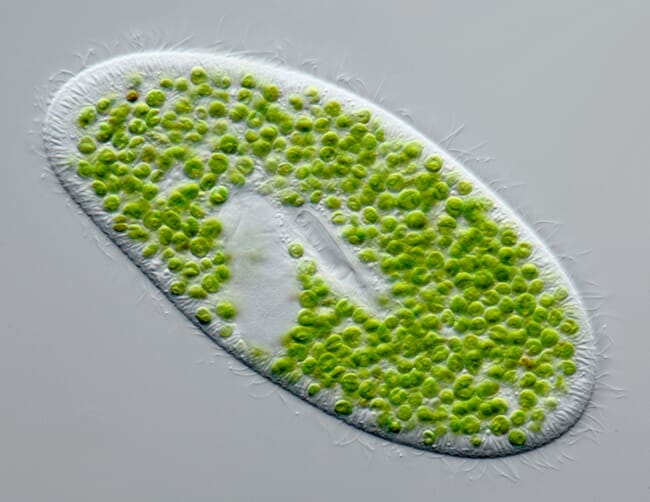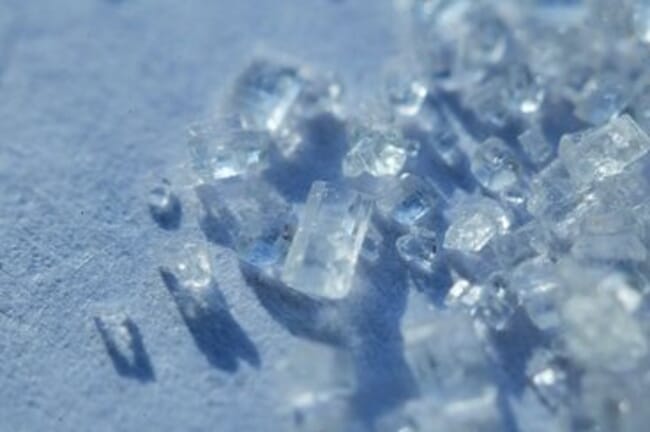
The algae strain was first studied by the European Space Agency (ESA), who identified its viability as a potential food source
Imagine a crop that has potential to produce near-infinite harvests. A crop that needs minimal fertiliser, no seeds to replant fields after the harvest and no specific grow season or climate. Imagine that crop is algae, the green gooey stuff we see growing in ponds. This is what BBE Professor Brett Barney, PhD, and his research team are investigating.
“When you think about crops that produce sugar, you think about sugar cane and you think about sugar beets,” said Dr Barney. “Most people don’t think about algae.”
This isn’t just any algae though. This is a specific strain of algae that develops a symbiotic relationship with a microbe called Paramecium bursaria. Paramecium bursaria is found in marine water and higher salinated fresh waters. The algae live inside the Paramecium and provide it with food (sugar), while the Paramecium gives the algae a free ride and protection.
This strain of algae first piqued Dr Barney’s interest when the European Space Agency (ESA) published a paper on using it as a potential food source. The ESA was interested in finding methods of feeding astronauts in space for multi-year long missions. Their research didn’t go much further. Now decades later, Dr Barney and his team have characterised the algae and sequenced the genome to enable further studies behind the mechanism of creating sugar.
This symbiotic relationship between the Paramecium and the algae has been recognised for more than 100 years. What makes this novel, are the potential uses of this sugar-excreting algae.
“We have [algae] strains that have been in culture collection for over 30 years and they still excrete sugar,” said Dr Barney. “That symbiotic relationship has evolved and it’s stable.” This comes as a surprise since there is no known benefit for the algae to continue creating sugar. He saw an opportunity for further research.
Dr Barney and his team are interested in this sugar creating algae for two main reasons. First, to use the sugars to fuel bacteria used in creating fertiliser.
“If we know we have an algae that produces sugar, we can do some things like grow these together [with bacteria] on agar plates. They could form a symbiotic relationship together where one gives the other something in return.”

The symbiotic relationship between algae and bacteria has potential to create nitrogen, a necessary chemical for fertilisers and carbon capture systems
This new symbiotic relationship between algae and bacteria has potential to create nitrogen, a necessary chemical for fertilisers. It could also be used for carbon capture. “If you convert that carbon to something that isn’t a gas, but into a commodity like sugar, that has value,” said Dr Barney. “Then you have another driver besides just trying to pull CO₂ out of the atmosphere; you’re making a new crop.”
Current technology used for carbon capture and storage (CCS) involves transporting liquid CO₂ via ship or pipeline. That CO₂ is then used to create products, like liquid fuel, adhesives or plastics. The technology to utilise the CO₂ is still being explored, so most of the CO₂ captured is stored deep underground. The gas is injected into the ground and stored in porous rock formations. This CCS process is costly, and plants with CCS use more fuel than one without.
Using algae as a sustainable, economically viable option for capturing carbon dioxide, while creating a valuable byproduct, sugar, is a big driver for Dr Barney and his team.




